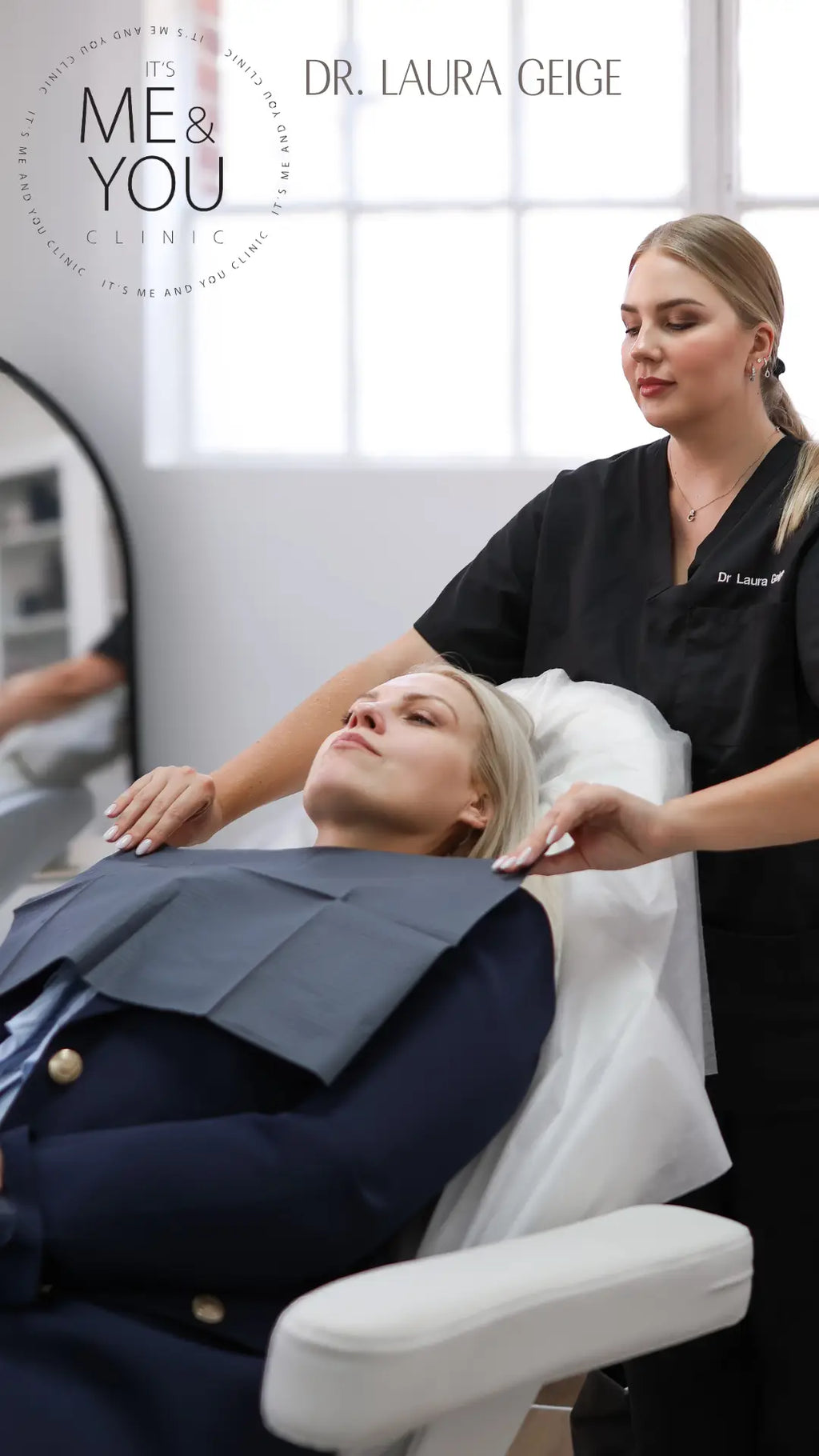Before You Book That Winter Vacation, Know How Cold Weather Can Sabotage Your Skin

Ah, winter holidays—the snow, the crisp air, the cosy vibes. The promise of a winter wonderland or a chic Christmas market in a far-off country sounds perfect, doesn’t it? You’re planning to sip hot cocoa by a crackling fire, dive into a blanket of snow, or stroll through festive lights with a fresh winter breeze kissing your face.
But before you get too excited and start packing your bags, it’s time to take a step back. Yes, winter vacations are dreamy, but the cold weather that makes these destinations so magical is also doing a number on your skin. It’s not all snowy beauty; the chill and dry air can dry out your complexion, leaving you with redness, irritation, and the dreaded premature ageing signs. So, before you grab your passport and head to your winter escape, it’s essential to think about how to protect and prep your skin for the colder temps.
Don’t panic, though! With a bit of planning and some clever skincare tips, you can still enjoy the winter wonderland without sacrificing your skin. From hydration tips to the best treatments, this article will guide you on how to keep your skin glowing and youthful through all your winter adventures. Let’s dive into how you can prepare your skin for the cold and keep it looking fresh, no matter how low the temperature drops.
Cold Weather Strips Your Skin of Moisture
It’s no secret that the winter months are a double-edged sword. While the season brings its share of beauty—from snow-capped mountains to crisp, clear air—it also has a nasty side when it comes to your skin. The cold air sucks moisture out of your skin faster than you can say "frostbite," leaving it feeling dry, tight, and sometimes even sore.
The drop in temperature causes blood vessels to constrict, which reduces circulation to your skin. This means that your skin gets less of the nutrients it needs to stay healthy and hydrated. At the same time, the wind steals moisture, leaving your skin looking dull and rough.
Dr. Snieguole Geige, Medical Director at It’s Me and You Aesthetic Clinic, explains: “Cold weather sucks the moisture right out of your skin. Without proper hydration, your skin becomes more prone to fine lines and wrinkles, and you’ll notice redness or irritation.”
To combat this, make hydration your number-one priority. Start by preparing your skin before you even leave for your trip. Use a good moisturiser that locks in moisture and a hydrating serum or oil to give your skin a fighting chance. And don’t forget to hydrate from the inside out—water is your best friend when travelling in cold climates. Drink plenty of fluids to keep your skin plump, glowing, and ready to take on the winter air.
How to Prep Your Skin before Your Trip
One of the most effective ways to prep your skin for colder weather is by starting your skincare routine in advance. Begin a few days before you leave by using a hydrating facial mask or oil. If you have particularly dry skin, a nourishing night cream will help lock in moisture overnight. For added protection, consider switching to a thicker moisturiser for your daily routine in the days leading up to your trip.
Windburn: Your Skin’s Worst Enemy
If you’ve ever spent the day skiing or walking in a winter wonderland, you’ve likely felt the sting of windburn. It’s that red, sore, tight sensation that lingers after hours in harsh, cold winds. Windburn is more than just uncomfortable; it breaks down your skin's protective barrier, leaving it vulnerable to irritation and damage.
Dr. Laura Geige, Senior Aesthetic Expert at the clinic, explains: “Windburn strips away the skin’s protective layer, leaving it vulnerable to cold, irritated, and inflamed.”
It’s essential to protect your skin from the harsh winter winds by applying a thick moisturiser or balm before heading out into the elements. Look for a product that creates a barrier on your skin to lock in moisture and shield you from the wind. A rich, emollient formula is best for keeping your skin nourished and protected.
And don’t skip sunscreen! It’s easy to forget that UV rays still pose a threat in the winter months, especially in snowy environments. Snow reflects up to 80% of UV rays, so you’re actually exposed to more sun than you might realise. A high-SPF sunscreen is crucial, even when the sun is hidden behind clouds. Make sure to reapply regularly, particularly on your face and exposed areas.
Indoor Heating: A Hidden Skin Saboteur
Now that you’ve braved the cold outdoors, you might think your skin is safe when you step inside. However, the warmth of indoor heating can be just as damaging as the cold air outside. While it’s tempting to retreat to a toasty hotel room after a day in the elements, central heating actually pulls moisture out of the air, drying out your skin.
The result? Your skin feels flaky, tight, and irritated. To combat this, consider using a humidifier to add moisture back into the air. This is especially helpful if you’re staying in a dry, heated environment for an extended period.
For extra hydration, bring along a nourishing face mask to apply after a long day outside. Look for masks that are packed with ingredients like hyaluronic acid, glycerin, and ceramides, which help to replenish moisture and strengthen your skin’s natural barrier. You’ll notice your skin looking refreshed and dewy, even after a full day of exposure to dry indoor air.
Long Flights and Dehydration
Long-haul flights are a necessary part of many winter vacations, but they also come with their own set of skincare challenges. The dry air in the cabin, combined with the stress of travel, can leave your skin parched and dull. You might feel refreshed when you land, but your skin likely won’t be showing the same signs of rejuvenation.
Birute Sutkiene, Marketing Lead at It’s Me and You, shares: “Flying for hours depletes your skin of moisture, and the stress of travel only adds to the problem. You might land feeling refreshed, but your skin won’t tell the same story.”
So, how can you fight dehydration mid-flight? First, make water your constant companion. Drink plenty of fluids before, during, and after the flight to keep your skin hydrated. If you’re worried about cabin air drying out your skin, consider bringing along a hydrating mist or serum to spritz throughout the flight. This can help maintain hydration and keep your skin looking fresh.
Once you’ve landed, treat yourself to a calming facial or hydrating mask to reset your complexion and boost moisture levels. After all, there’s no better way to recover from a long flight than a little self-care!
The Sun’s Still Out There (Yes, Even in Winter!)
You might think that the winter sun doesn’t pack the same punch as summer rays, but think again. If you’re headed to a snowy destination, the sun’s UV rays can be even more damaging than you realise. Snow reflects up to 80% of the sun’s rays, which means that you’re exposed to stronger UV radiation, even when the skies are overcast.
Dr. Rimas Geiga, Senior Medical Expert at the clinic, reminds us: “Many people forget about sun protection in winter, especially in snowy environments. The risk of UV damage is still high, and it’s vital to protect your skin to prevent premature ageing.”
To protect your skin, always wear a high-SPF sunscreen, preferably one designed for active outdoor use. Whether you’re skiing down the slopes or taking a stroll through a snowy landscape, make sure your sunscreen is up to the task. Reapply throughout the day, especially if you’ve been sweating or wiping your face. It’s a small step that makes a big difference in preserving your skin’s health and appearance.
The Best Treatments to Prepare Your Skin for Winter Travel
Before you take off on your winter adventure, it’s a good idea to book a pre-travel skincare treatment. Facials and skin boosters help lock in moisture and create a protective barrier against the harsh winter elements.
Dr. Rimas Geiga recommends: “Hydrating treatments like skin boosters or moisturising facials can help lock in moisture and prepare your skin for the cold. If you’ve already been exposed to windburn or dryness, dermal fillers or hyaluronic acid treatments can restore your skin’s youthful glow.”
For post-trip recovery, opt for a soothing facial to rehydrate and restore your complexion. This will reset your skin and help it bounce back from any damage caused by cold weather, windburn, or dehydration. Regular treatments help ensure that your skin stays plump, hydrated, and glowing throughout your trip—and beyond.
The Bottom Line
Winter travel doesn’t have to mean sacrificing your skin’s health. With the right preparation and skincare, you can enjoy your vacation while keeping your complexion fresh, hydrated, and glowing. From the effects of cold air to the hidden dangers of indoor heating, the tips above will ensure your skin is protected no matter where you go.




























